We’ve left our winter home of Quartzsite, AZ, and are headed north—initially to Vancouver, BC, to visit our daughter Beth’s family. Can’t wait! As much as we enjoyed being in the desert in Quartzsite (thank you BLM!), it is good to be on the road again and seeing new things.
Our second stop was in Three Rivers, CA, just outside the southern entrance to Sequoia National Park, the second National Park (what was the first???). Nestled in the western flank of the Sierra Nevada mountains, the scenery was gorgeous!
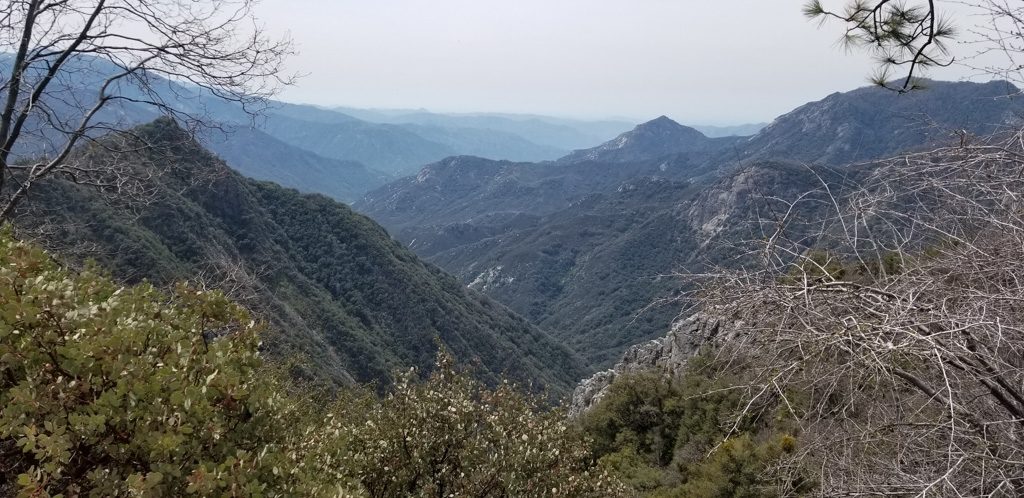
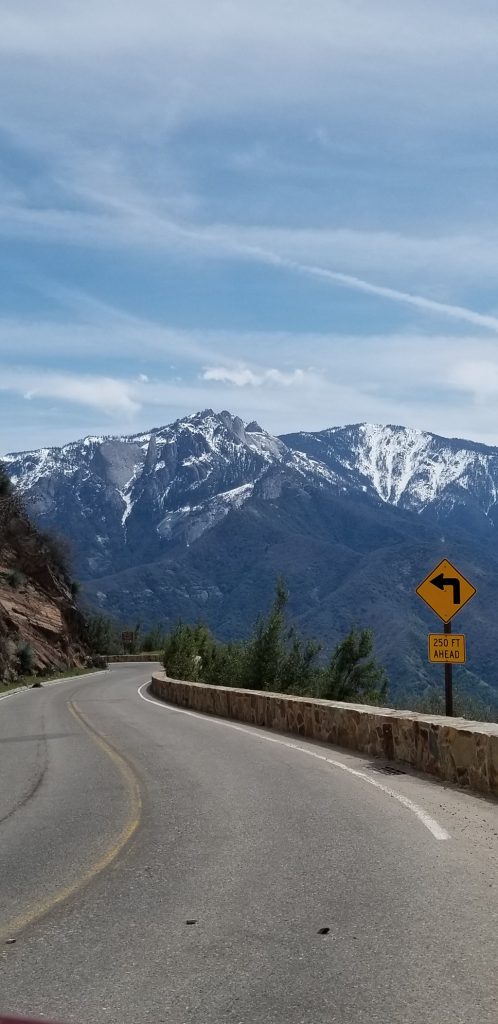
There is a downside to being surrounded by mountains… No cell signal. Nada. Zilch. Zip. It made us long for the very slow connectivity in Quartzsite! However, the campsite had a poor WiFi signal—I think through a satellite—so we could occasionally check our mail / Facebook messages. Sigh. We’re addicted to the net.
The restaurant we went to for breakfast was using dial-up to tie into their credit card system. When was the last time you heard the dulcet (!?) tones of a dial-up modem?
The reason for being here was to go into Sequoia NP, so let’s get to it!
The major attraction here is the trees, of course. In terms of volume (mass), the giant sequoias are the largest living trees. Coastal redwoods can grow taller, but they have a smaller diameter, and don’t retain that diameter at higher heights as much as sequoias do. The sequoias are limited in height due to limits on the capillary action which brings water and nutrients up from the root system. The redwoods can take in moisture through their leaves more efficiently, and thus grow higher than capillary action by itself would allow. (The ranger giving the talk accused the redwoods of “cheating!”—he must be a sequoia fan)
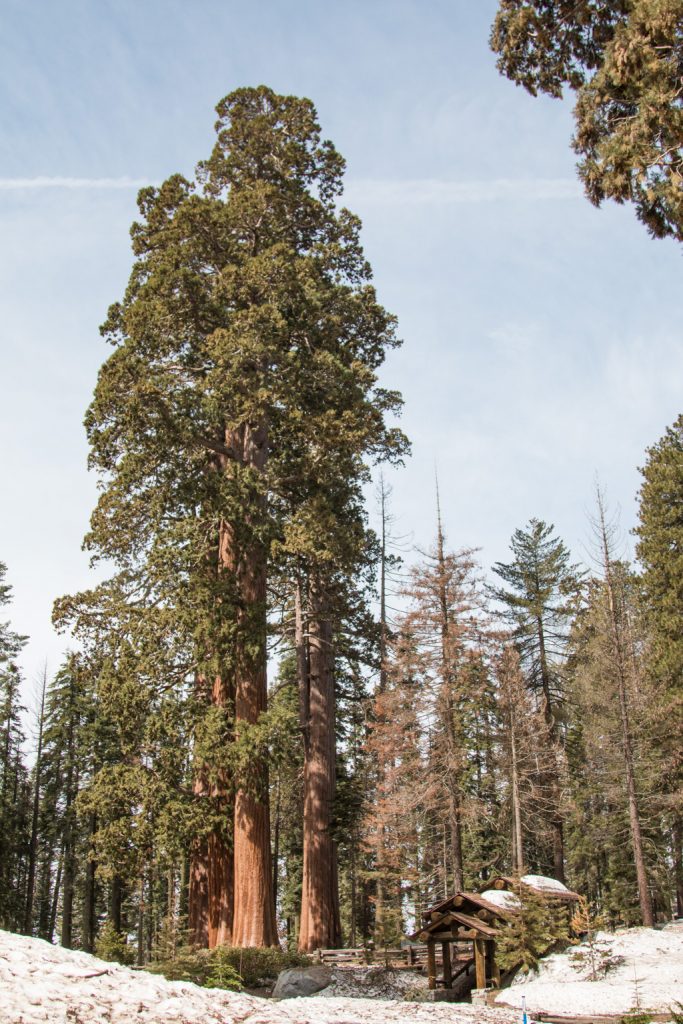
We went up into the mountains to see the tree named “General Sherman,” the largest known living tree in the world, in terms of volume. The diameter at the base is greater than 36 feet! And the volume of its trunk is more than 52,000 CUBIC FEET. It is up at around 6,900 feet elevation; getting there was fun. Vehicles over 22 feet long are prohibited from making the drive. Our truck is exactly 22 feet; we can see why longer vehicles are excluded!
Unfortunately, I forgot to dump the dashcam that evening, and the video of the drive got overwritten. However, here are a few pics showing the road.
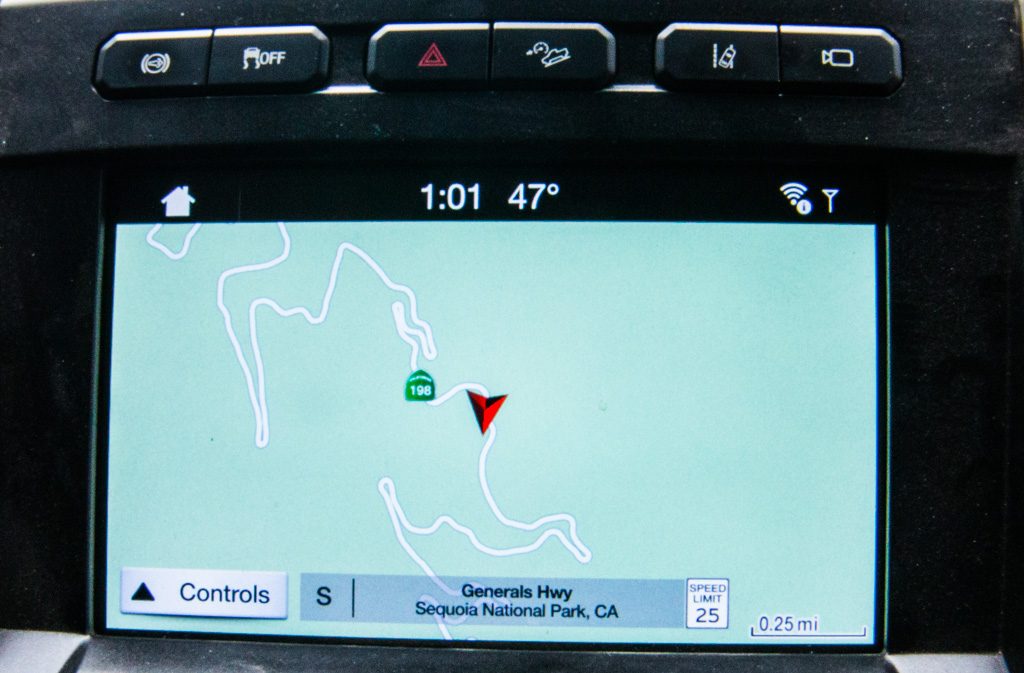
I don’t want to think about the effort it took to create the road! The designers did an excellent job of siting it; with very few exceptions the road above you is invisible. Looking down (way down), you can occasionally see the path ahead of you.
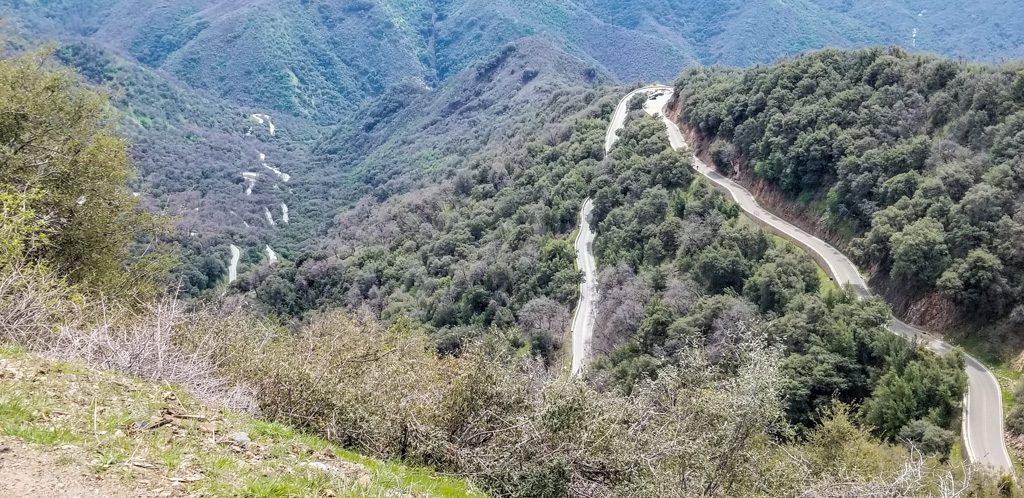
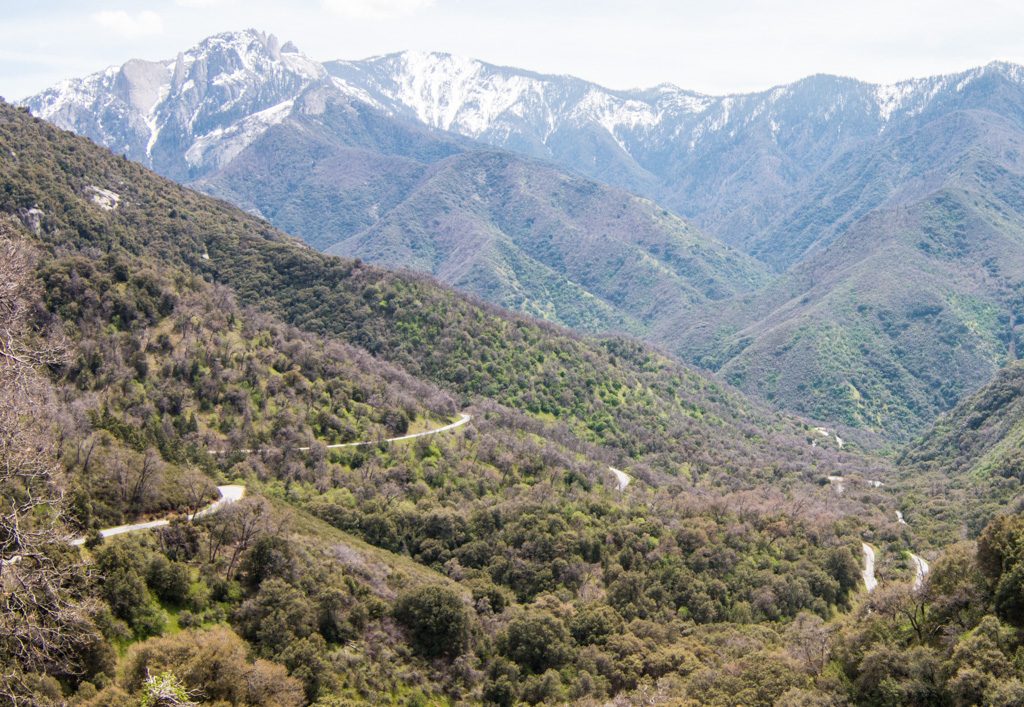
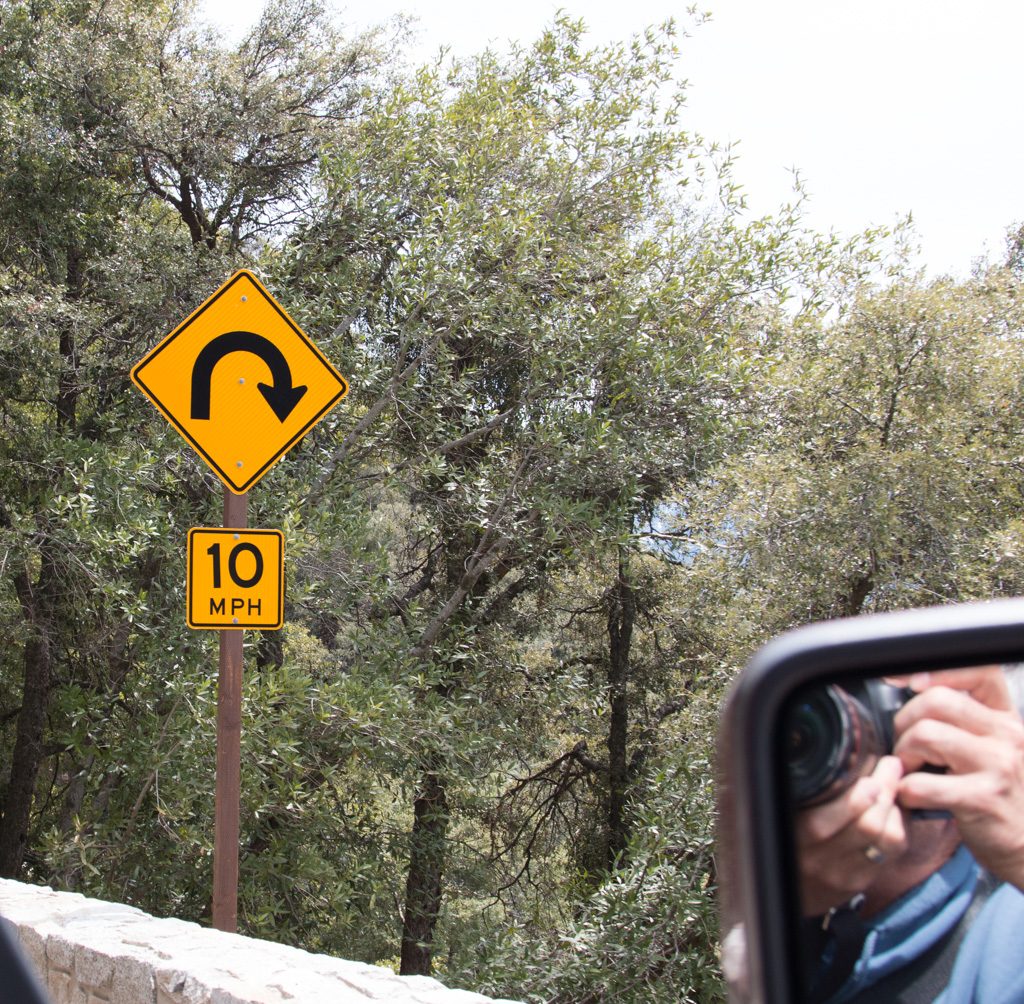
We were particularly taken with this roadside wall construction; it is so different from what we were used to at Acadia!
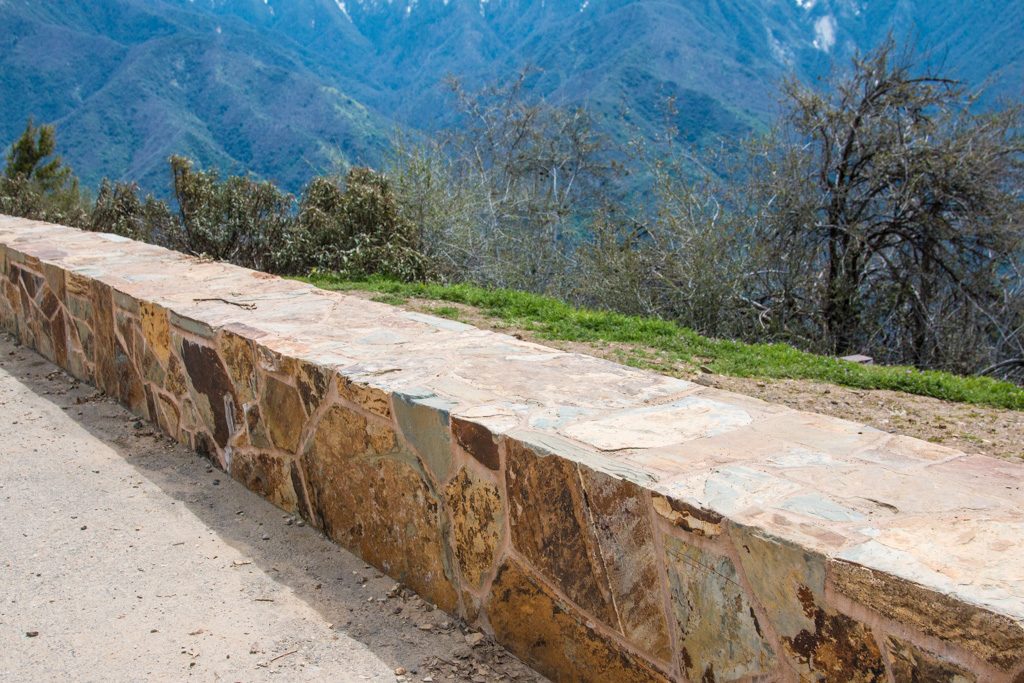
What were we talking about? Oh, yes. The trees!
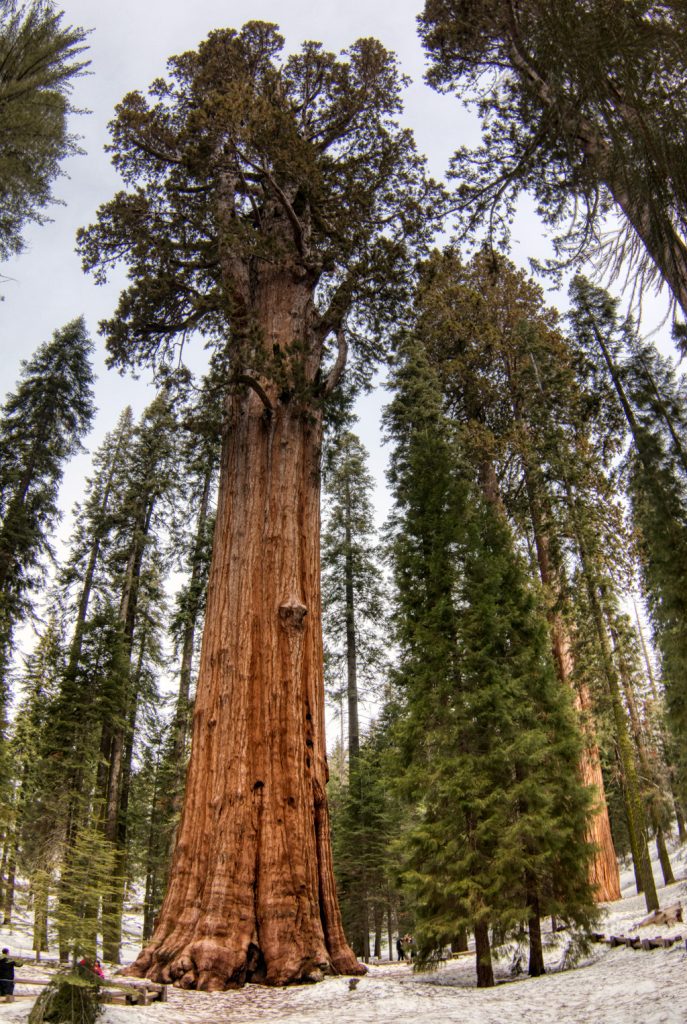
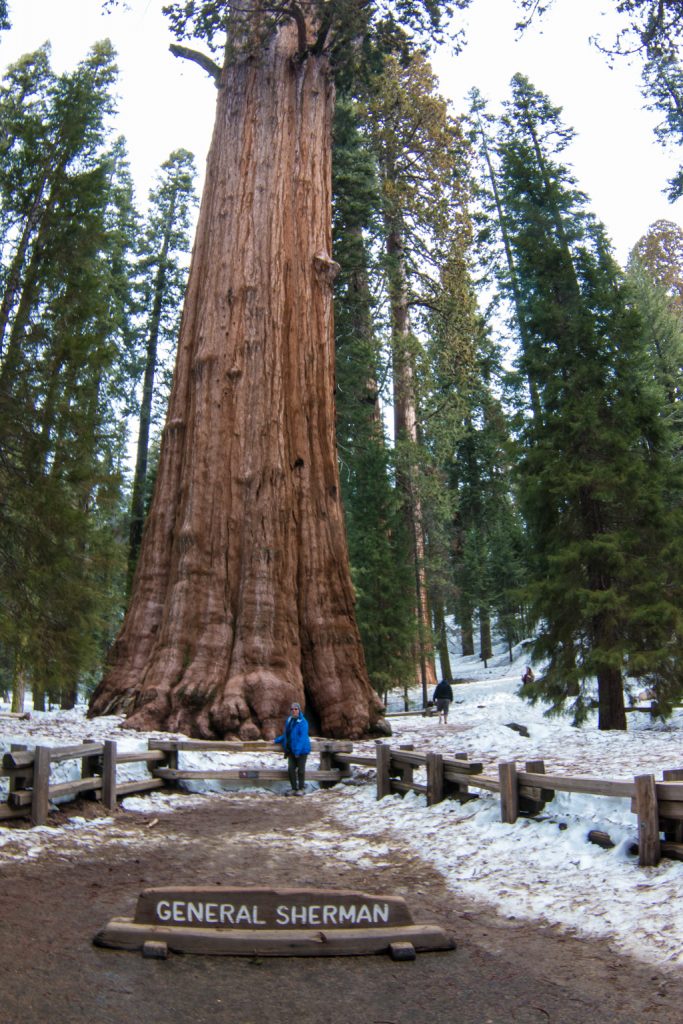
There are 75 known groves of giant sequoias in the world. The adjacent Sequoia and Kings Canyon National Parks protect “over 30” (NPS statistic) of those groves. (Three more groves are protected in nearby Yosemite NP.) General Sherman is in the grove named Giant Forest, an apt name if ever there was one. It contains 2,161 sequoias with a base diameter of over ten feet.
The sequoias live for a very long time. The ages of General Sherman and “The Sentinel” (near the museum in Giant Forest) are both estimated to be 2,200 years (“plus or minus 600 years,” according to one research article, we were told by a ranger). A page in the Yosemite NP site refers to a sequoia 3,266 years old, but is written in the past tense, so it may not still be living. Yes, you can buy giant sequoia seeds in the gift shop, but you’d better will them to your great-great-great-great-great-great-great-grandchildren!
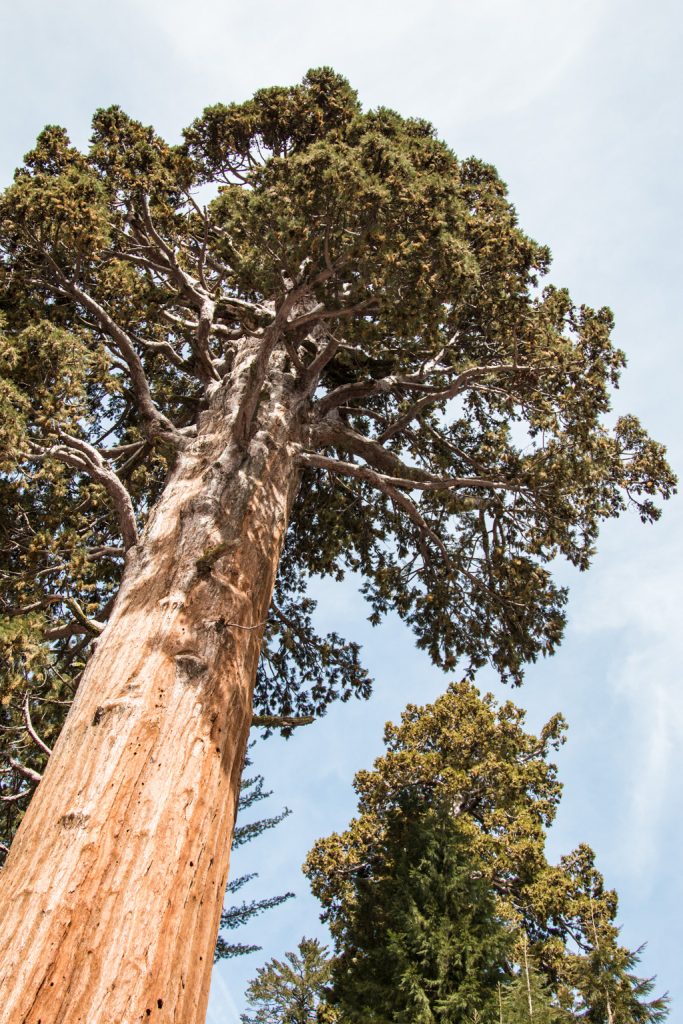
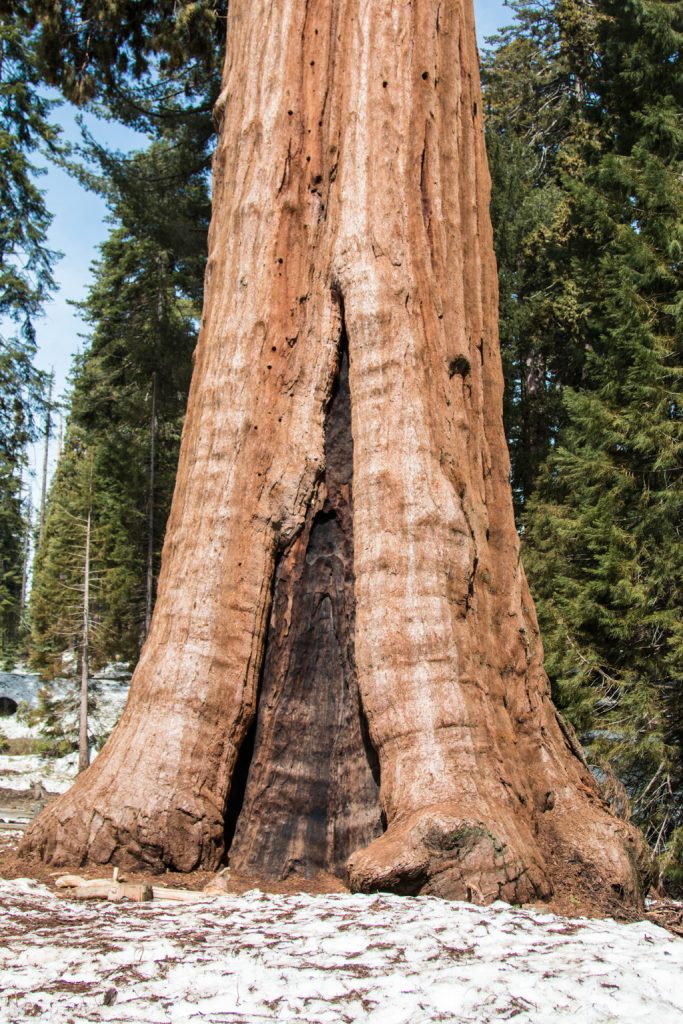
Giant sequoias require fire to reproduce! The fire does two things. It causes the seed cones (should these be called “sequoia cones,” like “pine cones?”) to open and release their seeds, and it removes the debris covering the forest floor so that the seeds can reach the soil and take root. A decades-long policy of complete fire suppression resulted in unhealthy groves with dense underbrush of other trees. That policy has been reversed, allowing some fires to take their natural course; the groves are regaining their health and there are now immature giant sequoias of different ages growing in the forest. There are few trees in the Giant Forest that do not bear signs of fire. Fortunately, they are able to withstand the fires, in part due to a bark that is up to two feet thick.
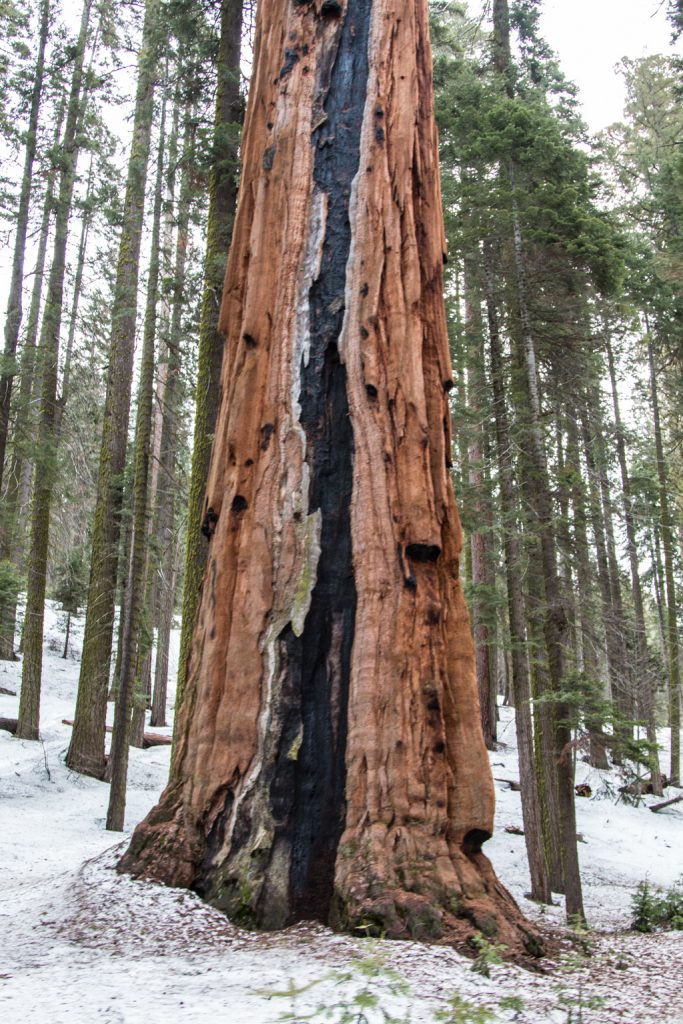
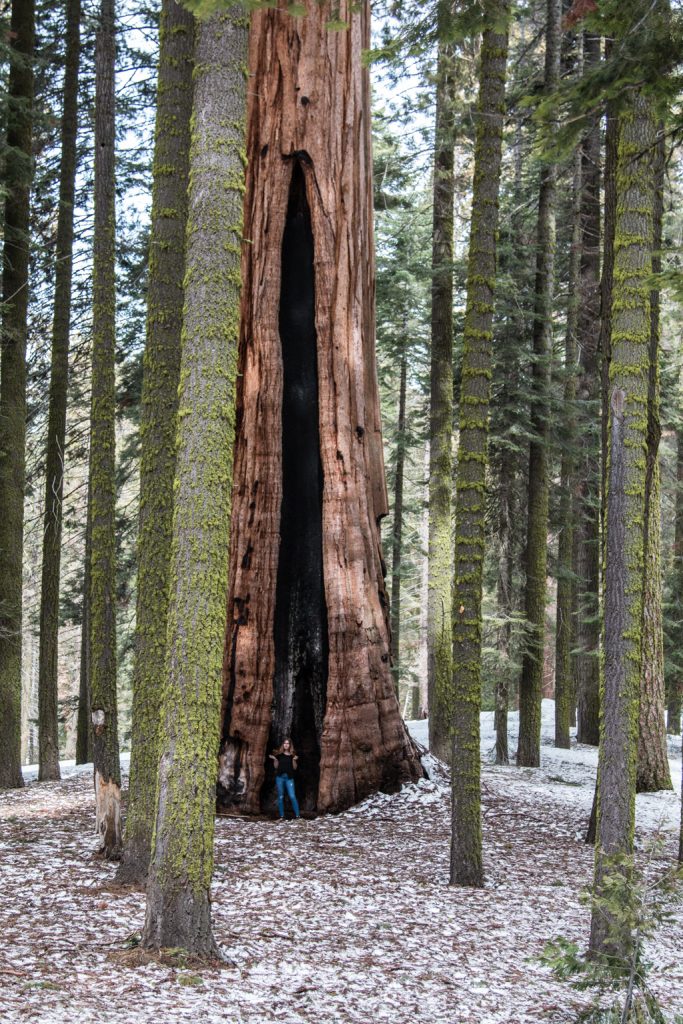
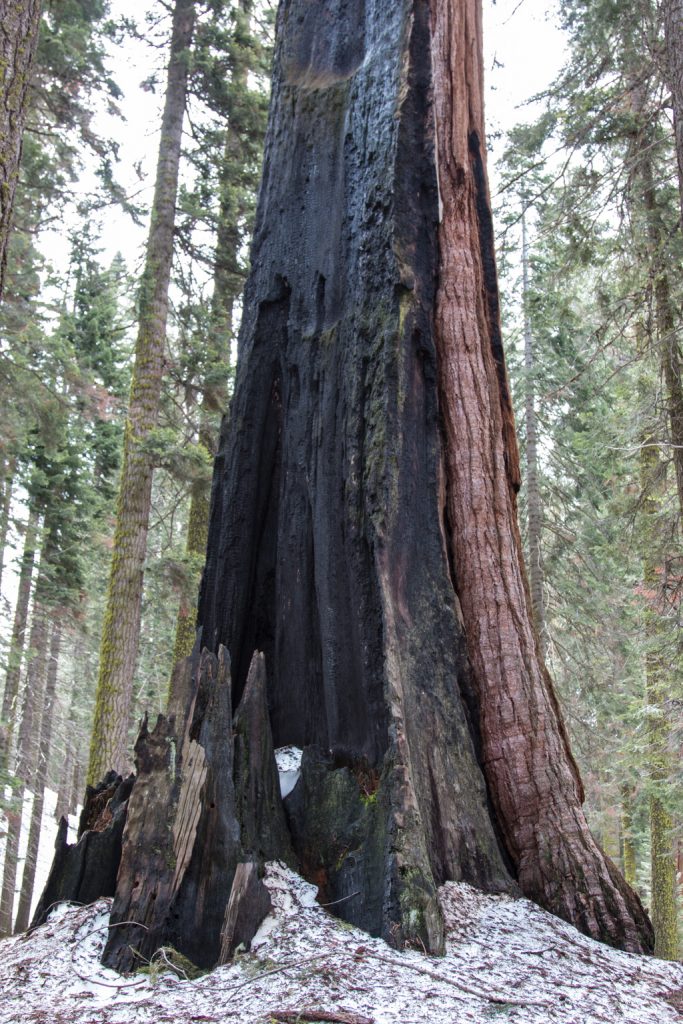
A good portion of the park is still closed due to snow. It is hard to believe that only a few days ago we were in the desert, with the temps in the high 80’s. When we drove through the park gate, the ranger told us, “You can’t go through to King’s Canyon. The road is closed due to last night’s avalanche.” Never been told that before!
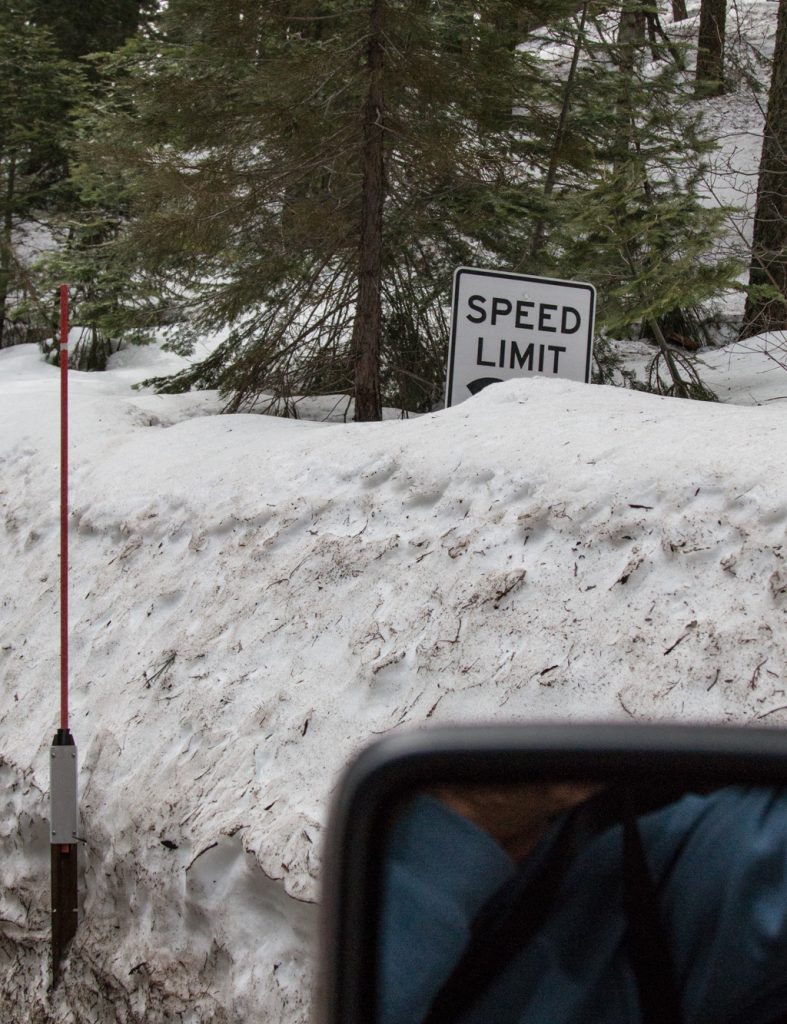
In addition to the trees, the park has high mountains, deep valleys, and fast flowing streams.
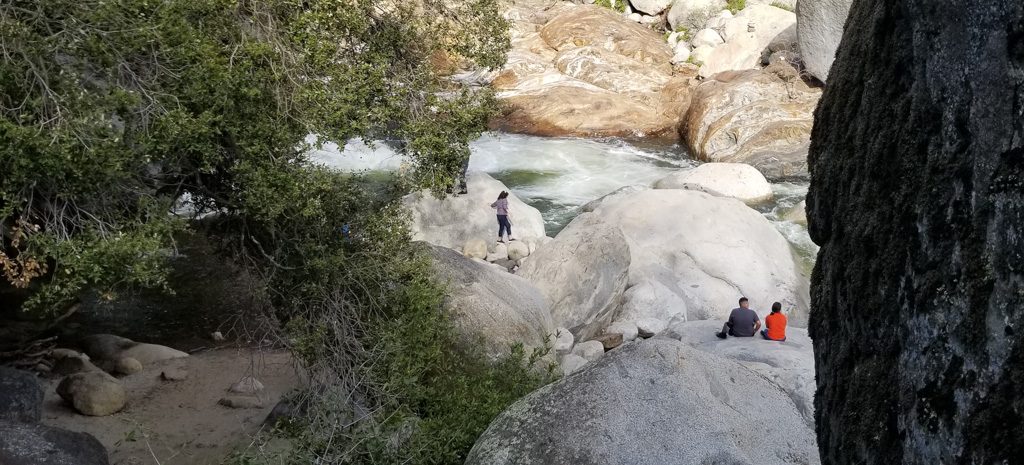
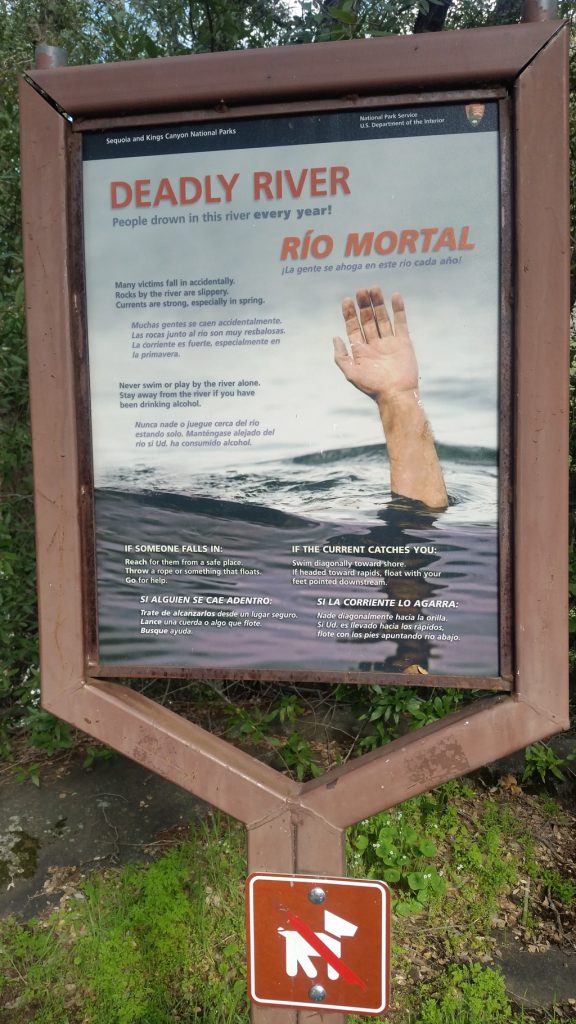
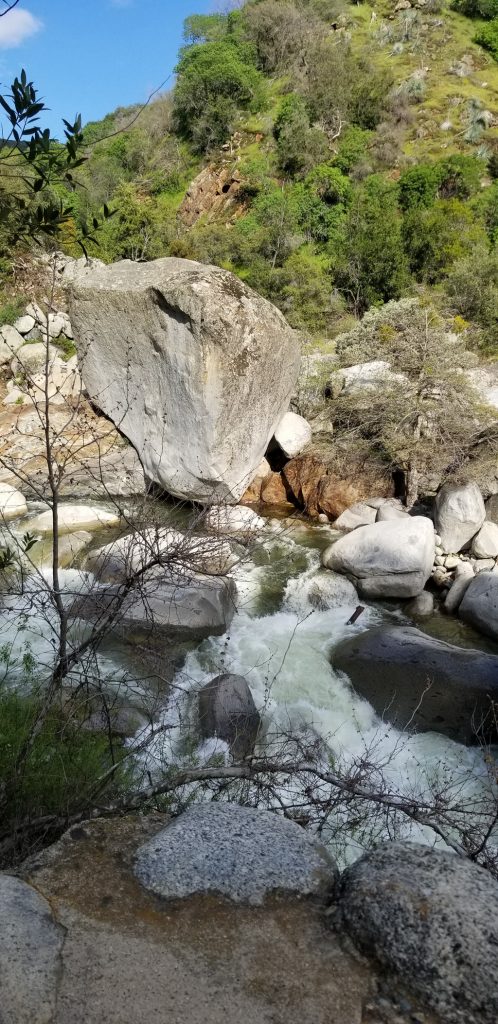

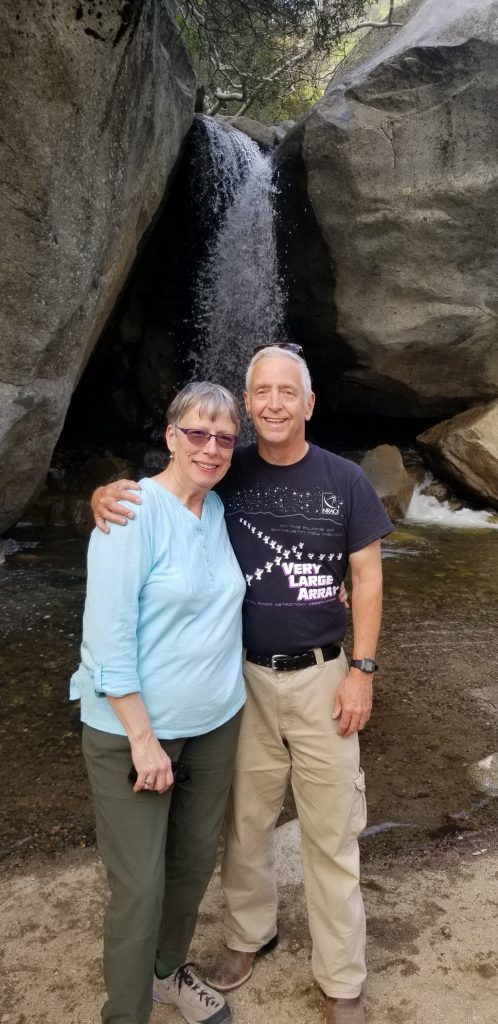
Before Europeans discovered this area, indigenous people were here. There is at least one site with pictographs; quite possibly more that they don’t tell visitors about.

And we found this “community kitchen” fascinating.
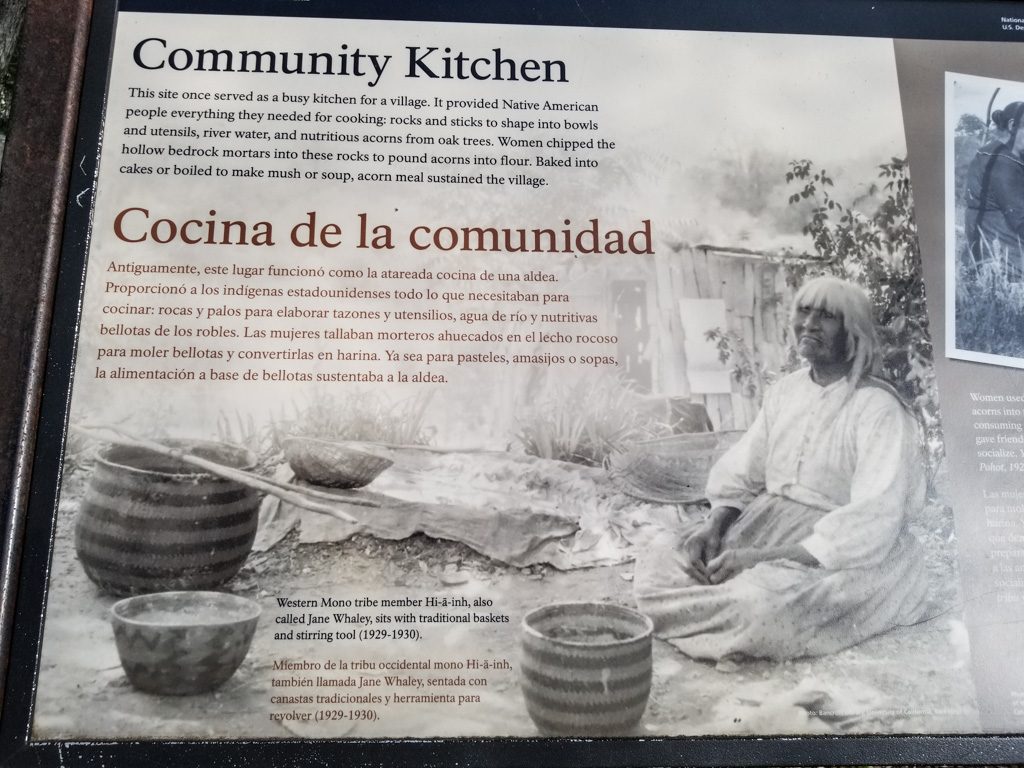
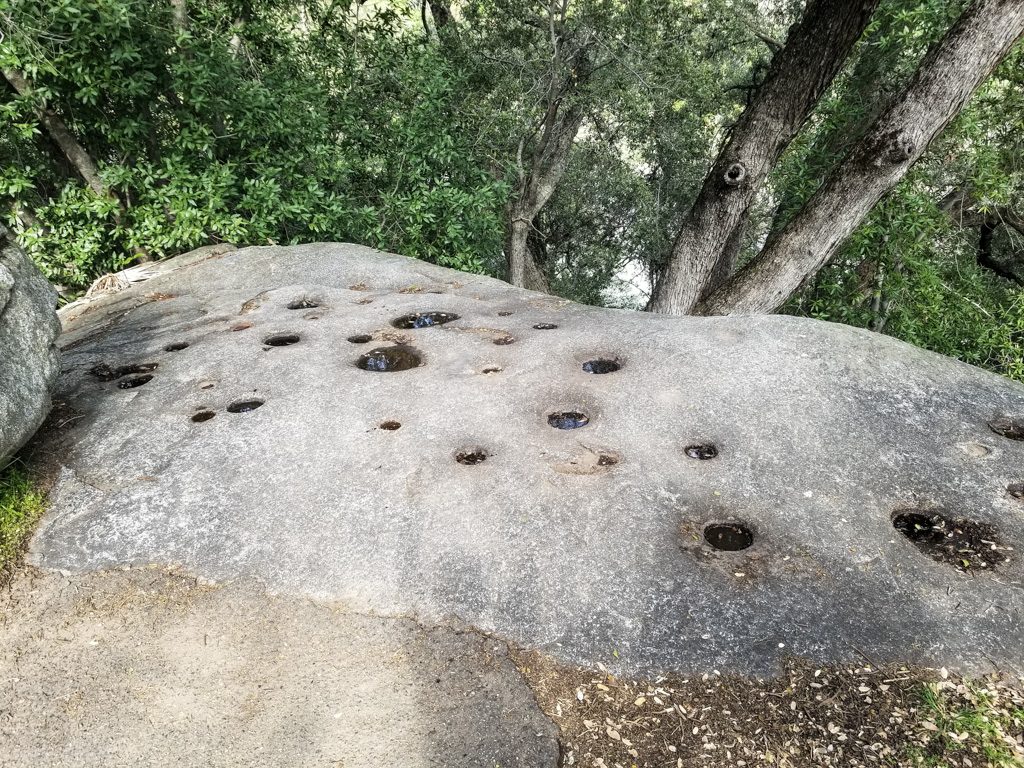
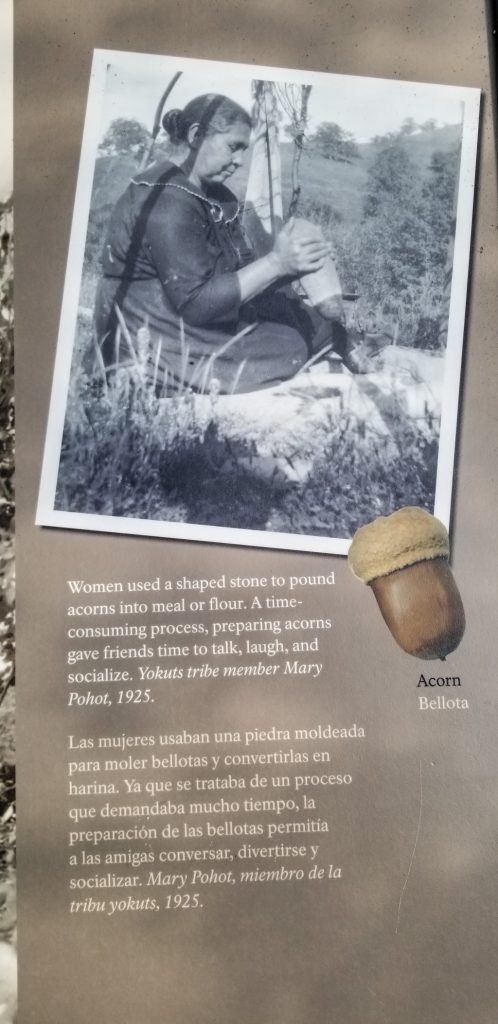
We enjoy visiting parks “out of season;” not only are the crowds thinner (sometimes non-existent), but it also forces you to come back again to see the parts that are currently closed! Lots more to see here.
Our next post will probably be from the Oregon coast… See you there!

This was a wonderful piece Al. I learned so much and you all got some wonderful photos. The roadway would be overwhelming for most….but worth it! Thanks so much for sharing the journey and letting us “come along”. Have a wonderful stay on the OR coast. It looks beautiful!!
Covered many interesting topics. Enjoyed all the info and pics. Have fun on the pacific coast!
Oh, my word, those trees are gigantic! Often, pictures do not do justice to such magnificence, but you both are such great photographers! Thanks so much for sharing your continuing journey with us. Safe travels to Oregon and beyond.
We toured there in 1991, glad to hear Sherman tree is still around. I believe we also encountered some snow at the time. Beautiful trees, ranger showed us how to calculate using geometry the potential for fire based on the forest floor.
Wow….you have had a perfect winter. Your pictures capture the beauty of the USA and priceless memories.
My memory of Kings Canyon and Sequoia is that the mind can barely comprehend the size of the trees . You see them, but can not re-imagine them . You have to go back and look again. Enjoy Oregon.
Thank you for taking us along on your interesting adventures. I always enjoy learning new things about our beautiful USA. Your notes pique my interest and now I need to learn more about how those roads in the mountains were created. Safe travels from a fellow Mainer!
Good morning from Mary and JR we thought we might run into you somewhere along the way. Rented a sprinter camper van in Seattle 3/26 and have visited Olympic/crater/ Yosemite/ Death Valley and just leaving Canyonlands for Colorado. Happy travels.
Love the northwest area you’re in and going to! I have a sister in Eugene and nieces and nephews in the Portland and Seattle area. We stayed at a home at Canyon rock for a week one summer. It was beautiful! Enjoy your travels!
Another really incredible post! It’s such fun to live vicariously through your pictures and descriptions!